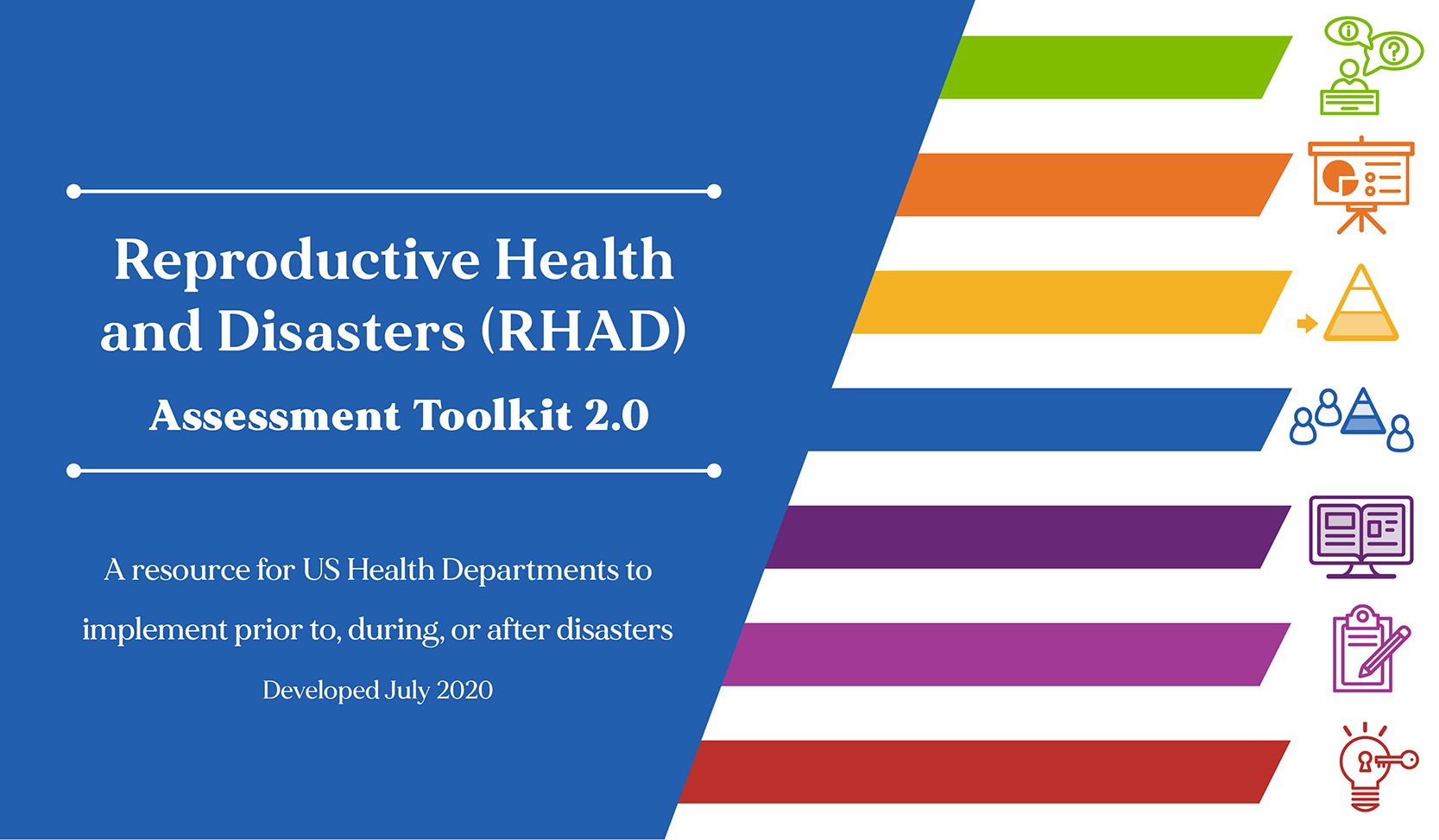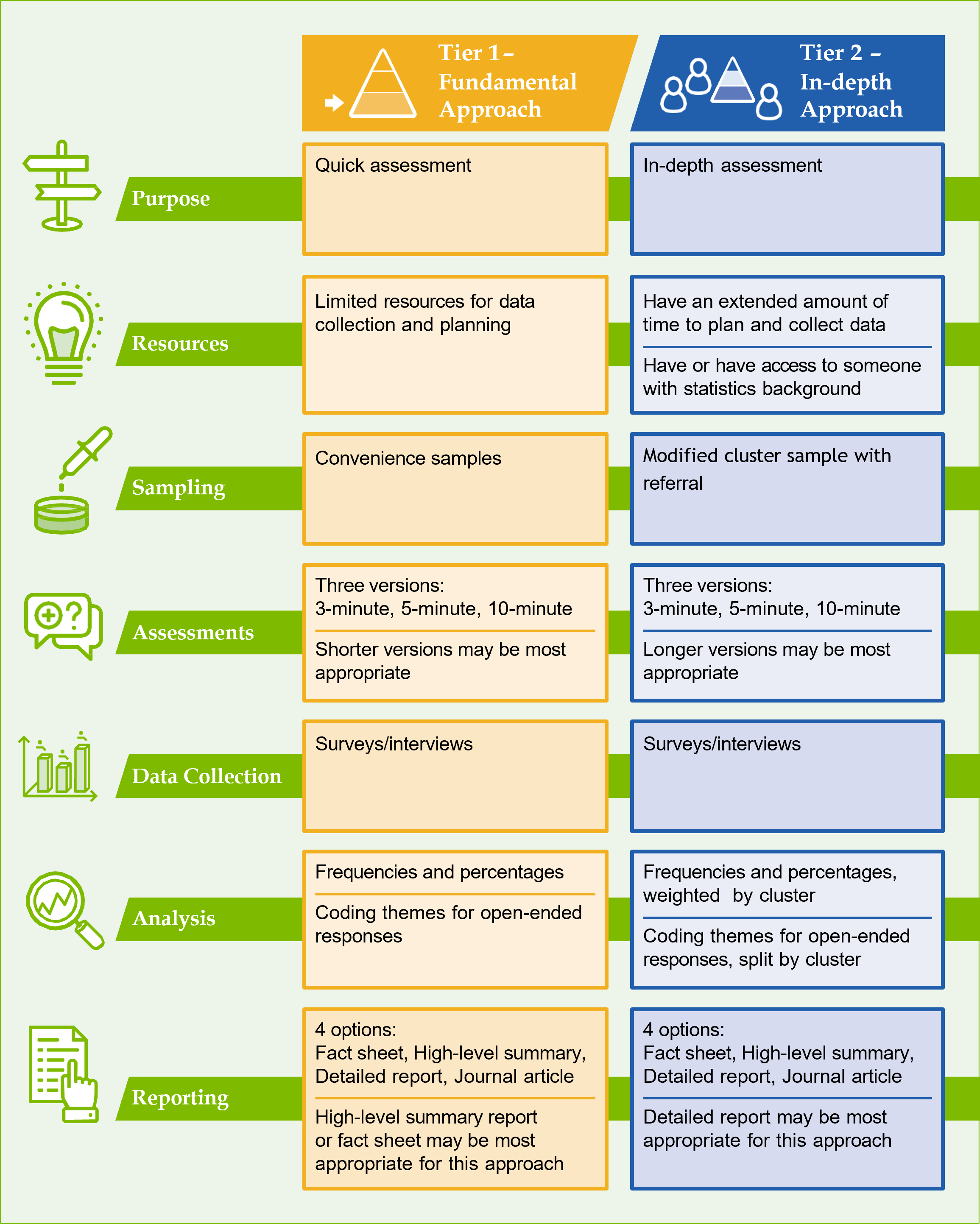Reproductive Health and Disaster (RHAD)
Assessment Toolkit 2.0
About This Toolkit
Introduction
How This Toolkit Works
The Reproductive Health and Disasters (RHAD) Assessment Toolkit 2.0 will assist agencies or communities with assessing the reproductive health needs of women aged 15-44, pregnant and postpartum women, and infants less than 1 year old affected by disasters. This includes infant caretakers of all gender identities. Disasters include natural (e.g., hurricanes, earthquakes), emerging or pandemic diseases such as COVID-19, or man-made (e.g., wildfires started by accidents).
The RHAD 2.0 Toolkit first provides guidance on the planning process to develop an assessment. The toolkit then provides step-by-step guidance for conducting either a streamlined or comprehensive approach to gathering information about reproductive age, pregnant, and post-partum women before, during, and after a disaster.
The streamlined or Fundamental approach is focused on convenience sampling and is best suited to jurisdictions with limited or time-sensitive resources. The comprehensive or In-depth approach includes a more robust sampling strategy. These approaches are explained in the TIER 1 and TIER 2 toolkit sections, which can be found in their respective links above.
This toolkit also includes 3 assessment instruments that jurisdictions can use to assess RHAD, depending on how much time jurisdictions will have with each participant being surveyed or interviewed. Assessment instruments are interchangeable and can be used in either the Fundamental or In-depth approach. See the ASSESSMENT TOOLS to download these instruments.
The GLOSSARY section features definitions of key terms described in the toolkit.
Additional helpful templates, assessment checklists, and scripts may be found under the RESOURCES tab in the menu.

